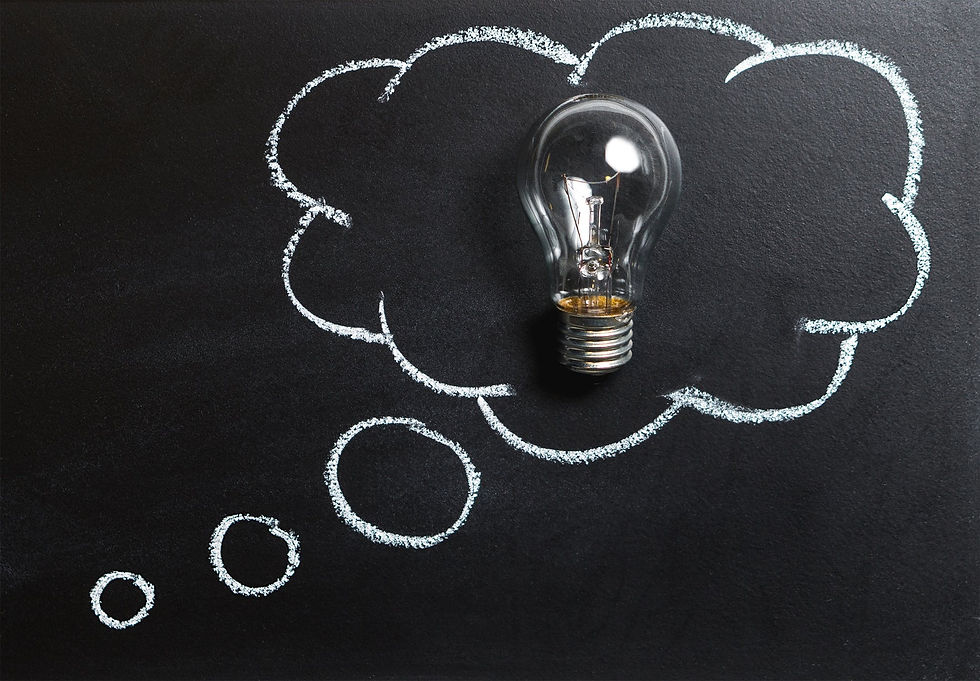Brain Rules - Book Brief
- Bonnie Endicott

- Mar 22, 2020
- 4 min read
Updated: Nov 18, 2025
Five Brain Rules to improve your learning & development programs.
I read John Medina's Brain Rules years ago, and recently pulled it out as a refresher. I'm a big fan, and I highly recommend reading this book. Medina outlines 12 important points about how the brain functions. There are direct applications to L&D, and certainly to our own self mastery and health, in every rule.
For this Talent Folks Book Debrief we'll look at five of the 12 points with a few ideas on how they can help you in your talent work.
If this is your first time visiting, a note about Book Briefs. They offer talent development-specific application from business, leadership and sundry books. Not a review. Not a synopsis. Three to five bullets that you can apply to your daily TD life.
Brain Rule #4 – We Don’t Pay Attention to Boring Things
Bottom-line: don’t be boring. For learning professionals, that means chunking up learning into digestible bits. Medina suggests 10 minute increments, as we tend to check out if we’re not re-engaged after 10 minutes. Messages that tend to grab our attention are those connected to a previous experience and topics that interest us. We also remember things that we find emotionally charging – it’s the dopamine that transmits info between our neurons that makes the memory “sticky.” So, design training into learning bites of no more than 10-minute segments, re-hook your audience with a relevant point (factoid, quote, joke, shocking fact, etc.) at 9 minutes and 59 seconds to keep them interested, and engage their emotions to make the relevant points of learning sink in.
Brain Rule #5 – Short-term Memory
It’s depressing: We typically forget 90% of what we learn in a class within 30 days, and most of this happens within hours of when class ends. What can we do to overcome this learning leakage? According to Medina, the more “elaborately we encode information at the moment of learning, the stronger the memory.” To do that, first, complexify the learning. Give it an emotional twist, relate it to something learners have experienced in the past, make them do something with the information, create a new experience. That’s why we need to engage all learning styles, repeat things seven times, etc. We’re complexifying the learning. Second, mimic the environment when they’ll need to remember the learning. Our brains store information about the learning in the same area where we store memories about that environment.
Brain Rule #7 – Sleep. Get some.
No really, sleep loss = mind loss. Sleep loss causes lack of attention, poor functioning of your executive center (that’s the part of your brain that makes decisions), immediate and working memories, logical abilities and eventually manual dexterity. While sleeping, your brain is busy! It’s processing and storing memories and experiences throughout the day. The amount of sleep folks need differs for everyone, but I suppose one thing all adults can agree on (and kids disagree on) is that naps are great! A NASA experiment shows that a 26-minute nap during the day improved performance 34%.
Brain Rule #8 – Stress
We know that chronic stress affects us poorly. What Medina indicates is that we are most highly stressed by things we perceive as out of our control or looming uncertainties. Case in point, the fears and anxieties we have as we work in a different environment caused by COVID-19. Change is the new norm these days, so consider implementing change tools that folks can engage when stress builds. Educate employees about the importance of stress management and taking care of their health. Engage the new (#notreallynew) concept of "employee wellbeing."
Brain Rule #9 – Sensory Integration
This is one I think we already get, but haven’t thought of in these terms. Stimulate more of the senses to firmly encode something into the brain during learning – use multimodal reinforcement. Our brains are powerful, especially at integrating data, senses, inputs, etc. Capitalize on this to help folks learn. Some specifics:
Folks learn better from words + pictures, than words alone.
Folks learn better when you don’t include extraneous info. Keep it focused.
Smells remind folks about emotional details, but not so much about declarative memory.
Vision is our most powerful sense.
The brain is a fascinating thing. The more we learn about it the more curious it becomes. I loved Medina’s book not just because it highlighted how interesting our brains are, but because he offered some practical ways we can adjust our training styles to better support participants. We are after all, helping folks encode new stuff into an already crowded brain. I’ll leave you with this quote to hopefully pique your interest: “Though we have been stuffing them into classrooms and cubicles for decades, our brains actually were built to survive in jungles and grasslands. We have not outgrown this” (p 5).
Sign-up and leave your suggestions on how to tap into brain science to make training programs better.
Endnotes:
Medina, John. Brain Rules: 12 Principles for Surviving and Thriving at Work, Home, and School. Pear Press, 2008.
I am an affiliate of Bookshop.org and earn a commission if you make a purchase through the links on this page. I appreciate your support of this site and independent bookshops. Visit the Simply Strategic Talent shop at Bookshop.org.





Comments